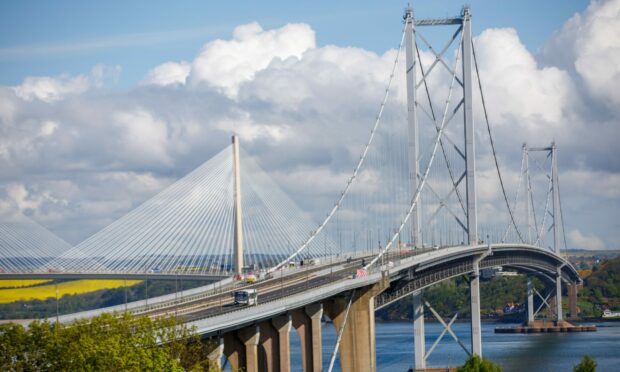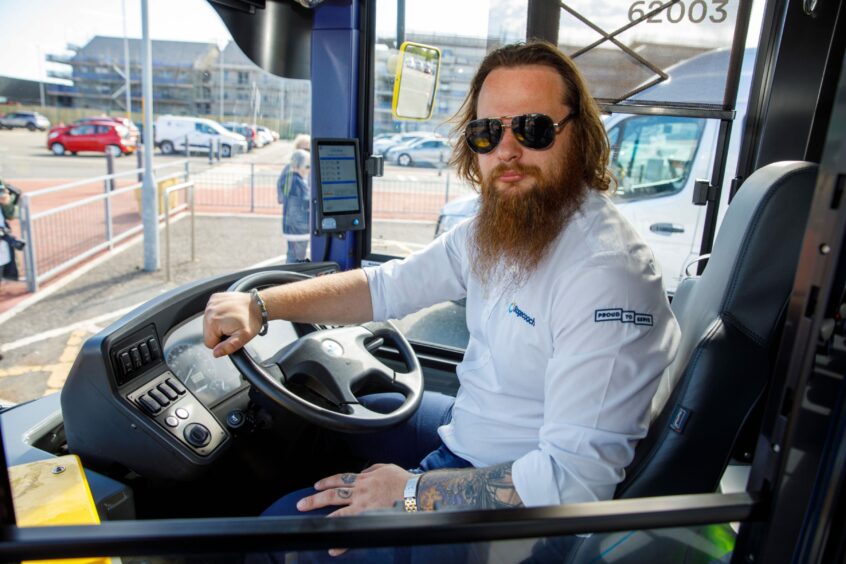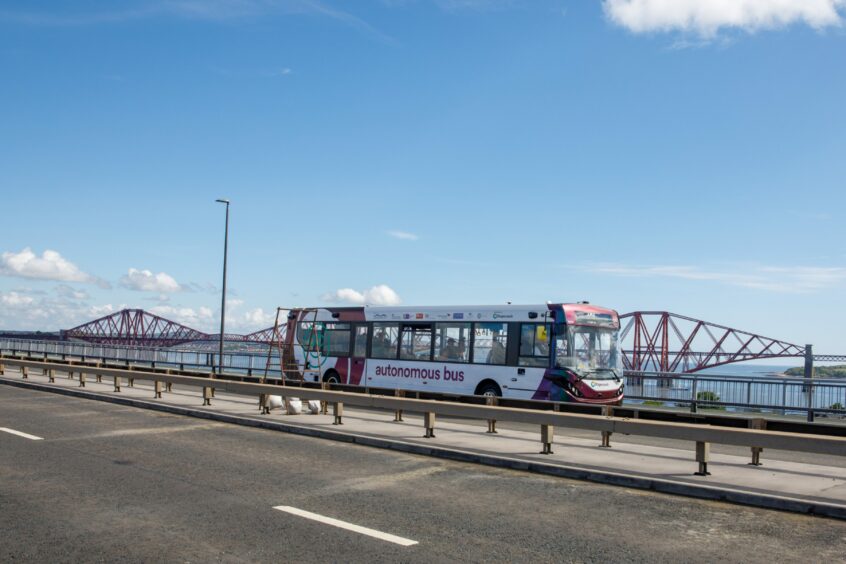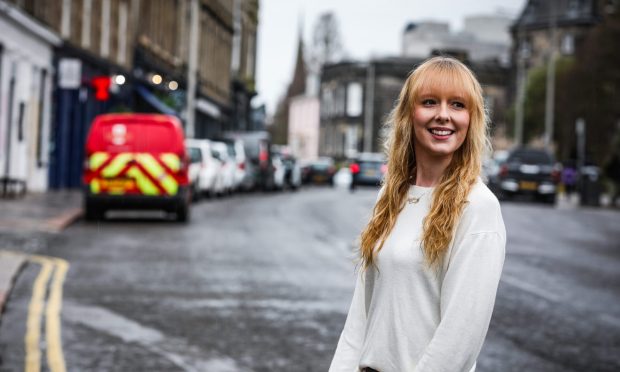The CAVForth ‘driverless’ bus service will launch on May 15, loaded with smart tech – but it doesn’t fully drive itself yet.
Stagecoach’s new ‘driverless’ bus service will travel from the Ferrytoll Park and Ride near Inverkeithing to the Edinburgh Park Transport Exchange.
The term ‘driverless’ is a bit of a misnomer, however, as there is not one but two drivers on board the buses at a time.
They are known as the bus captain and the safety driver, and both are trained to take over when required.
Meet the ‘driverless’ bus driver
Callum Jones is one of the bus captains (or safety drivers). He is trained to take the wheel whenever the bus’s smart software isn’t in charge.
While Callum, 33, said the computer “should” be in charge for over 90% of the route, there are a couple of places where the drivers have to do “manual driving”.
However, he added that “the bus is capable of doing the full route.”
The bus drives autonomously – that’s with the computer – across the Forth Road Bridge.
The system is also in control from the M90 and M8 to the A720 in Edinburgh.
The driver has to take over when the bus is heading to and around the Ferrytoll park and ride and at the Edinburgh Park Transport Exchange.
Watch the ‘driverless’ bus from the passenger seat as it heads over the Forth Road Bridge in the video below.
The safety drivers on the AB1 (or Abby as it is also fondly referred to) keep their hands hovering over the wheel at all times. This is both to reassure passengers and so that they can take control quickly if something goes wrong.
They will also take over when met with severe weather, blue lights or road works.
Would you get on the ‘driverless’ bus in Fife? Take part in our poll.
“We’ve done over ten hours worth of driving experience in [an] autonomous service on public roads,” Callum added.
He agreed that, initially, it felt a little scary and surreal to get behind the wheel.
“But then your driver instincts take over,” he said.
“You’re too busy keeping an eye on the road and what the bus is doing.
“It just feels like a normal bus ride after that.”
Data crunching helps driverless bus navigate Fife
Jim Hutchinson is the CEO of Fusion Processing Ltd, the company responsible for the complex sensors the bus is equipped with. He explained how the tech works.
“There are quite a few different sensors. So there’s LiDARs” (laser imaging sensors) – “Radar and there’s cameras.
“They all gather lots of information and that all goes back to our central processing units.”
Data also comes in from things like traffic signals and Transport Scotland too, via cellular connection.
Jim continued: “It crunches through all of that data and it works out the environment which it is in.
“From what it can see, it will work out where all the cars are, where the cyclists are, where it is on the lane. So then it’s got knowledge of its destination and it plans a route, then it breaks that down into a number of steps to execute.
“The final stage is to actually send the electric signals through to the actuator – that’s the steering, breaks and throttle.”
And if something goes wrong? Jim says the system is very quick to act.
“One of the benefits of the system is that it’s very fast. So it has a very good view all around and it knows what’s going on.
“As a human driver, you’re looking forward then you have to turn your head and look around. But our system is looking around it all the time.
“It can react much quicker than a human can.”













Conversation